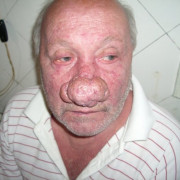Bei uns sind sie sicher!
Содержание:
Editorial Team
WomensHealthMag.com is produced by a team of highly trained journalists and editors with decades of combined experience reporting on health, fitness, nutrition, and wellness news.
Editor-in-Chief, Liz Plosser
Executive Editor, Abigail Cuffey
Digital Director, Robin Hilmantel
Design Director, Raymond Ho
Executive Digital Editor, Amanda Woerner
Health Director, Jacqueline Andriakos
Features Director, Marissa Gainsburg
Fitness Director, Jordan Galloway
Features
Deputy Managing Editor, Laura McLaughlin
Entertainment Director, Nojan Aminosharei
Audience Engagement Manager, Amanda Lucci
Health Editor, Kristin Canning
Fitness and Wellness Editor, Kristine Thomason
Associate Love and Lifestyle editor, Lindsay Geller
Editorial Business Coordinator, Caryn Kanare
Assistant Editors, Alexis Jones, Aryelle Siclait
Contributing Writer, Jennifer Nied
Beauty Director, Kristina Rodulfo
Senior Beauty Editor, Chelsea Traber Burns
Fashion
Chief Fashion Director, Women’s Group Aya Kanai
Executive Fashion Director, Kristen Saladino
Style Director, Cassie Anderson
Accessories Director, Kathy Lee
Bookings Director, Steven Brown
Senior Market Editor, Hannah Deely
Fashion Editor, Kia Goosby
Associate Fashion Editors, Andrea Zendejas, Ann Wang
Fashion Assistants, Rachel Bogo, Danielle Flum
Food
Chief Food Director, Kate Merker
Senior Food Editor, Drew Anne Salvatore
Food Editor, Catherine Lo
Editorial Project Manager, Trish Clasen
Test Kitchen Assistant, Taylor Murray
Editorial Assistant, Rebecca Miller
Art
Art Director, Betsy Halsey
Associate Art Director, Trevor Williams
Designer, Jewelyn Butron
Digital-imaging Specialist, Jairo Corleto
Hearst Visual Group
Chief Visual Content Director, Hearst magazines, Alix CampbellExecutive visual Director, Fabienne Le RouxVisual Director, Kristin GiamettaSenior Visual Editor, Scott M. LaceyDeputy Visual Editor, Brenda ArmendarizSenior Visual Researcher, Jenna AndrewsVisual Assistant, Hannah Kaplan
Copy and research
Copy Chief, Marli Higa
Research Chief, Jennifer Messimer
Research Editor, Darren Reidy
Assistant Research Editor, Nick Pachelli
Frequent WomensHealthMag.com contributors
Nicole Blades, Colleen de Bellefonds, Emilia Benton, Sarah Bradley, Grace Gold, Charlotte Andersen Hilton, Samantha Lefave, Jessica Migala, Anna Medaris Miller, Korin Miller, Marissa Miller, Daley Quinn, Rachael Schultz, Caroline Shannon-Karasik, Celia Shatzman, Alexa Tucker, Christine Yu
Country
- All countries
- Aaland Islands
- Afghanistan
- Albania
- Algeria
- American Samoa
- Andorra
- Angola
- Anguilla
- Antarctica
- Antigua and Barbuda
- Argentina
- Armenia
- Aruba
- Australia
- Austria
- Azerbaijan
- Bahamas
- Bahrain
- Bangladesh
- Barbados
- Belarus
- Belgium
- Belize
- Benin
- Bermuda
- Bhutan
- Bolivia
- Bosnia and Herzegovina
- Botswana
- Brazil
- Brunei Darussalam
- Bulgaria
- Burkina Faso
- Burundi
- Cambodia
- Cameroon
- Canada
- Cape Verde
- Cayman Islands
- Central African Republic
- Chad
- Chile
- China
- Chinese Taipei
- Christmas Island
- Cocos (Keeling) Islands
- Colombia
- Comoros
- Congo
- Congo — Dem. Republic
- Cook Islands
- Costa Rica
- Croatia
- Cuba
- Curacao
- Cyprus
- Czech Republic
- Denmark
- Djibouti
- Dominica
- Dominican Republic
- Ecuador
- Egypt
- El Salvador
- England
- Equatorial Guinea
- Eritrea
- Estonia
- Ethiopia
- Falkland Islands
- Faroe Islands
- Fiji
- Finland
- France
- French Guiana
- French Polynesia
- French Southern Territories
- Gabon
- Gambia
- Georgia
- Germany
- Ghana
- Gibraltar
- Greece
- Greenland
- Grenada
- Guadeloupe
- Guam
- Guatemala
- Guernsey
- Guinea
- Guinea-Bissau
- Guyana
- Haiti
- Honduras
- Hong Kong
- Hungary
- Iceland
- India
- Indonesia
- Iran
- Iraq
- Ireland
- Isle of Man
- Israel
- Italy
- Ivory Coast
- Jamaica
- Japan
- Jersey
- Jordan
- Kazakhstan
- Kenya
- Kiribati
- Korea — Democratic Peoples Republic of
- Korea — Republic of
- Kosovo
- Kuwait
- Kyrgyzstan
- Laos
- Latvia
- Lebanon
- Lesotho
- Liberia
- Libya
- Liechtenstein
- Lithuania
- Luxembourg
- Macao
- Macedonia
- Madagascar
- Malawi
- Malaysia
- Maldives
- Mali
- Malta
- Martinique
- Mauritania
- Mauritius
- Mayotte
- Mexico
- Moldova
- Monaco
- Mongolia
- Montenegro
- Montserrat
- Morocco
- Mozambique
- Myanmar
- Namibia
- Nauru
- Nepal
- Netherlands
- New Caledonia
- New Zealand
- Nicaragua
- Niger
- Nigeria
- Niue
- Norfolk Island
- Northern Ireland
- Northern Mariana Islands
- Norway
- Oman
- Pakistan
- Palestinian Territory — Occupied
- Panama
- Papua New Guinea
- Paraguay
- Peru
- Philippines
- Pitcairn
- Poland
- Portugal
- Puerto Rico
- Qatar
- Reunion
- Romania
- Russian Federation
- Rwanda
- Saint Helena
- Saint Kitts and Nevis
- Saint Lucia
- Saint Pierre and Miquelon
- Saint Vincent and the Grenadines
- Samoa
- San Marino
- Sao Tome and Principe
- Saudi Arabia
- Scotland
- Senegal
- Serbia
- Seychelles
- Sierra Leone
- Singapore
- Sint Marteen
- Slovakia
- Slovenia
- Solomon Islands
- Somalia
- South Africa
- South Georgia and the South Sandwich Islands
- Spain
- Sri Lanka
- Sudan
- Suriname
- Svalbard and Jan Mayen Islands
- Swaziland
- Sweden
- Switzerland
- Syria
- Tajikistan
- Tanzania
- Thailand
- Timor-Leste
- Togo
- Tokelau
- Tonga
- Trinidad and Tobago
- Tunisia
- Turkey
- Turkmenistan
- Turks and Caicos Islands
- Tuvalu
- Uganda
- Ukraine
- United Arab Emirates
- United States
- Uruguay
- Uzbekistan
- Vanuatu
- Venezuela
- Vietnam
- Virgin Islands — British
- Virgin Islands — U.S.
- Wales
- Wallis and Futuna
- Western Sahara
- Yemen
- Zambia
- Zimbabwe
Causes and symptoms
Cardiovascular disease can be caused by blockage of a blood vessel, high blood pressure, or a secondary complication to another disease. There may be an abnormal heart rhythm or cell death. Patients may complain of a broad spectrum of symptoms that may include pain chest discomfort, high blood pressure, or strain during physical exertion.
When attempting to define the cause and symptoms of cancer, it is important to assess the type of cancer and location. Additionally, if the tumor is localized (benign) or has spread to other areas (malignant), is vital for treatment planning and overall prognosis. In cases of breast cancer there mat be a lump discovered during self-examination or mammography (special breast x rays).
Cerebrovascular disease may cause tremors (shaking), loss of balance and coordination, or functional and sensation loss of some parts of the body. Patients may have sudden transient strokes that could result in temporary loss of consciousness and amnesia of the incident. Patients may also develop chronic neurological states that causing memory loss and behavioral changes (Alzheimer’s disease ).
Patients with pulmonary (lung) cancer may develop shortness of breath, fatigue, weight loss, worsening cough, and coughing up bright red blood with sputum. Lung infections such as pneumonia may present with high fever, weakness, difficulty breathing, and abnormal breathe sounds heard with a stethoscope during physical examination.
Diabetes is a syndrome with disordered metabolism and high blood sugar due to an abnormality in the chemical that regulates sugar levels. It is characterized by an increased thirst, urination, and chronic skin infections.
Osteoporosis may cause the bones to be brittle and weak. It is usually not detected until bones start to break.
The alcohol abuser will continue to drink despite negative repercussions. The person may not seek treatment to evade legal and/or child custody problems. The patient may hide alcohol, or confine drinking to specific times. The disease progresses to where there may be permanent liver damage, memory blackouts and malnutrition.
Depression may manifest a loss of interest and desire. Patients may have difficulty getting out of bed. They may lack motivation to work or tend to daily activities.
Patients with AIDS may not have symptoms for years. When active disease occurs, patients will typically develop recurrent infections that are the usual cause of death.
Domestic violence is usually associated with a perpetrator who is in a relationship with the affected person. Abuse can be manifested by physical violence and/or homicide.
Editorial Policies
Reporting Guidelines
WomensHealthMag.com asks all editors and writers to follow strict reporting protocols to ensure the accuracy of all information reported on the site. Studies must be reviewed before being cited in stories, and all factual information must be attributed to a reliable source. Editors rely on interviews with expert sources to substantiate all articles, and each story is reviewed and fact-checked by at least two editors before being published on site. Articles are then regularly reviewed and updated to include the newest information available on the topic.
Editorial Independence
WomensHealthMag.com receives support from advertisers. However, all content is produced independently. Any content produced in conjunction with an advertiser, or paid for by an advertiser, is clearly marked as such on the site.
Affiliate Links
WomensHealthMag.com participates in affiliate marketing programs—meaning that purchases made by readers who visit our site and then go to retailers/products recommended by our editors may result in paid commissions. The products we feature are always chosen by editors based on brand standards.
Description
Women’s health is the concept that examines gender differences in health and disease states. The average life expectancy has almost doubled for women (79 years for women and 73 years for men), when compared with averages during the turn of the century. Because of the gender gap in lifespan, women comprise approximately two thirds of the population older than 65 and three fourths of the population aged 85 years and older. Currently the fastest growing group in the United States is persons aged 85 years and older. Because of gender life expectancy differences, it is estimated that at the beginning of the twenty-first century, women will outnumber men in the 85 years and older category by 3:1. The reasons for this variance are primarily due to physiological differences among men and women.
During different phases of a women’s life cycle there are complex interactions that exist between sex hormones, physiological changes, and emotional issues. Physiological changes occur as early as embryonic development when hormones program structural differences between male and female brains. During reproductive years, sex hormones profoundly influence reproduction and development, which creates a spectrum of gender specific health issues. With advancing age and onset of menopause, women’s risk factors for disease is comparably similar to men’s. Although the same disease may affect women as men, it is thought that biological mechanisms and psychosocial differences influence the clinical course of the disease (natural history) differently in women. The number of women working has doubled within the past 50 years. The effect of work stress, new environmental exposures and multiple roles is expected to have health and social impact.
The leading causes of death among women are cardiovascular disease, malignant cancer, cerebrovascular disease, chronic lung disease, pneumonia/influenza, and diabetes. Additionally, women can be prone to osteoporosis, alcohol abuse, psychological disorders, human immunodeficiency virus infection, and violence.
Heart Disease accounts for approximately a third of all deaths in women. About 250,000 women die annually of coronary heart disease or a one in three chance after age 40 years. The incidence of heart disease occurs about 10 years later in women than in men, since estrogens in premenopausal women has a protective effect. African American women are more prone to die from heart disease up to age 75. Beyond 75 years of age the propensity is reversed. Native American and Hispanic women have lower death rates from heart disease.
Malignant cancers are the most common cause of premature death among women. Breast cancer is the second leading cause of death in women and the most commonly diagnosed cancer. Lung cancer, secondary to cigarette smoking is the leading cause of cancer death among women.
Cerebrovascular disease, or stroked related deaths account for approximately 6% of all deaths in women and it is the third leading cause of mortality. The least common form of stroke, subarachnoid hemorrhage, is the more common cause in women.
The prevalence of cigarette smoking has increased greatly in women and this is correlated with pulmonary disease. Death rates for pulmonary disease including cancer and infectious causes of death are expected to rise for women.
Diabetes, a leading cause of death in women is more prevalent among Hispanic, African American, and Native American women. Past age 45, diabetes affects about one in six women.
Women can also develop:
osteoporosis, or loss of the quantity of bone, common in postmenopausal women who have estrogen changes.
- alcohol abuse, characterized by repeated usage of alcohol despite negative consequences. These women frequently do not seek treatment because of fear of consequences (i.e., loss of child custody). This disease can also have adverse affects on fertility and in the developing fetus if the mother continues to consume alcohol (fetal alcohol syndrome).
- psychological disorders, such as depression and eating disorders.
- acquired immunodeficiency syndrome (AIDS ), which represents the highest percent increase in death rates.
- violence, a leading cause of death, primarily caused by a perpetrator who is or was a partner.
ALL PLAYERS (3959)
| Mark Rose Zhang as favorite | 1 | 1 | Rose Zhang | 17.9811 | 1687.1775 | ||
| Mark Rachel Heck as favorite | 2 | 2 | Rachel Heck | 14.6792 | 1558.4717 | ||
| Mark Ingrid Lindblad as favorite | 3 | 3 | Ingrid Lindblad | 22.9245 | 1532.7710 | ||
| Mark Beatrice Wallin as favorite | 4 | 4 | Beatrice Wallin | 19.8113 | 1329.9514 | ||
| Mark Youmin Hwang as favorite | 5 | 5 | Youmin Hwang | 14.3773 | 1302.8020 | ||
| Mark Tsubasa Kajitani as favorite | 6 | 6 | Tsubasa Kajitani | 16.2264 | 1260.1500 | ||
| Mark Xiaowen Yin as favorite | 7 | 8 |
1 |
Xiaowen Yin | 13.5094 | 1242.6682 | |
| Mark Allisen Corpuz as favorite | 8 | 7 |
-1 |
Allisen Corpuz | 16.4905 | 1240.7751 | |
| Mark Emma Spitz as favorite | 9 | 9 | Emma Spitz | 23.8867 | 1214.2790 | ||
| Mark Hannah Darling as favorite | 10 | 11 |
1 |
Hannah Darling | 9.3773 | 1186.3095 | |
| Mark Emilia Migliaccio as favorite | 11 | 12 |
1 |
Emilia Migliaccio | 18.1320 | 1183.8894 | |
| Mark Amiyu Ozeki as favorite | 12 | 34 |
22 |
Amiyu Ozeki | 10.5471 | 1169.7562 | |
| Mark Gina Kim as favorite | 13 | 10 |
-3 |
Gina Kim | 18.1320 | 1168.1122 | |
| Mark Brooke Matthews as favorite | 14 | 18 |
4 |
Brooke Matthews | 21.3773 | 1159.5885 | |
| Mark Lei Ye as favorite | 15 | 13 |
-2 |
Lei Ye | 14.5849 | 1155.2680 | |
| Mark Lauren Walsh as favorite | 16 | 14 |
-2 |
Lauren Walsh | 14.1698 | 1153.0754 | |
| Mark Haruka Kawasaki as favorite | 17 | 36 |
19 |
Haruka Kawasaki | 11.9622 | 1137.5825 | |
| Mark Bang Shin Sil as favorite | 18 | 19 |
1 |
Bang Shin Sil | 17.6415 | 1130.4873 | |
| Mark Paula Schulz-Hanssen as favorite | 19 | 16 |
-3 |
Paula Schulz-Hanssen | 10.7735 | 1127.5710 | |
| Mark Julia Johnson as favorite | 20 | 15 |
-5 |
Julia Johnson | 16.5283 | 1125.4941 | |
| Mark Yu-Chiang Hou as favorite | 21 | 17 |
-4 |
Yu-Chiang Hou | 21.5094 | 1102.7940 | |
| Mark Carolina Lopez-Chacarra Coto as favorite | 22 | 21 |
-1 |
Carolina Lopez-Chacarra Coto | 10.8113 | 1081.5848 | |
| Mark Rachel Kuehn as favorite | 23 | 22 |
-1 |
Rachel Kuehn | 19.0377 | 1076.0151 | |
| Mark Megha Ganne as favorite | 24 | 23 |
-1 |
Megha Ganne | 14.5471 | 1068.7035 | |
| Mark Aline Krauter as favorite | 25 | 25 | Aline Krauter | 18.8301 | 1065.6069 | ||
| Mark Hinano Muguruma as favorite | 26 | 27 |
1 |
Hinano Muguruma | 12.0188 | 1055.1953 | |
| Mark Karen Fredgaard as favorite | 27 | 20 |
-7 |
Karen Fredgaard | 14.5471 | 1051.8312 | |
| Mark Benedetta Moresco as favorite | 28 | 28 | Benedetta Moresco | 16.7169 | 1051.4766 | ||
| Mark Jeong Hyun Lee as favorite | 29 | 30 |
1 |
Jeong Hyun Lee | 19.7735 | 1049.0444 | |
| Mark Yu-Sang Hou as favorite | 30 | 24 |
-6 |
Yu-Sang Hou | 21.6226 | 1048.6209 | |
| Mark Grace Kim as favorite | 31 | 29 |
-2 |
Grace Kim | 15.2075 | 1046.9828 | |
| Mark Alexandra Forsterling as favorite | 32 | 33 |
1 |
Alexandra Forsterling | 12.1132 | 1034.0083 | |
| Mark Caley McGinty as favorite | 33 | 35 |
2 |
Caley McGinty | 19.6792 | 1022.8639 | |
| Mark Meja Ortengren as favorite | 34 | 37 |
3 |
Meja Ortengren | 19.3773 | 1021.9419 | |
| Mark Alessia Nobilio as favorite | 35 | 39 |
4 |
Alessia Nobilio | 22.7924 | 1021.2386 | |
| Mark Hsin-Yu Lu as favorite | 36 | 31 |
-5 |
Hsin-Yu Lu | 20.2830 | 1019.8171 | |
| Mark Annabell Fuller as favorite | 37 | 32 |
-5 |
Annabell Fuller | 21.9245 | 1018.0016 | |
| Mark Amalie Leth-Nissen as favorite | 38 | 44 |
6 |
Amalie Leth-Nissen | 13.7169 | 1011.1226 | |
| Mark Carla Bernat Escuder as favorite | 39 | 38 |
-1 |
Carla Bernat Escuder | 8.6792 | 1009.9330 | |
| Mark Louise Duncan as favorite | 40 | 26 |
-14 |
Louise Duncan | 9.9622 | 1004.9943 | |
| Mark Rin Yoshida as favorite | 41 | 46 |
5 |
Rin Yoshida | 10.0000 | 999.0900 | |
| Mark Ayaka Tezuka as favorite | 42 | 43 |
1 |
Ayaka Tezuka | 10.0000 | 995.8300 | |
| Mark Sara Kouskova as favorite | 43 | 41 |
-2 |
Sara Kouskova | 25.0000 | 983.4986 | |
| Mark Carolina Melgrati as favorite | 44 | 40 |
-4 |
Carolina Melgrati | 14.2641 | 978.4205 | |
| Mark Rio Takeda as favorite | 45 | 662 |
617 |
Rio Takeda | 7.0000 | 978.2857 | |
| Mark Charlotte Heath as favorite | 46 | 42 |
-4 |
Charlotte Heath | 13.6792 | 969.0263 | |
| Mark Miyu Sato as favorite | 47 | 354 |
307 |
Miyu Sato | 11.8867 | 965.7024 | |
| Mark Megan Schofill as favorite | 48 | 47 |
-1 |
Megan Schofill | 19.3018 | 944.6138 | |
| Mark Erica Shepherd as favorite | 49 | 45 |
-4 |
Erica Shepherd | 19.7735 | 944.4703 | |
| Mark Isabella Fierro as favorite | 50 | 48 |
-2 |
Isabella Fierro | 18.7735 | 938.4070 |
Diagnosis
Diagnosis can be accomplished with a history, physical examination, and specialized tests or procedures. For cardiovascular disease an electrocardiogram can determine the activity of the heart. Additional tests may include echocardiography (ultrasonic waves that generate an image), stress testing, and studies that require placing a catheter with a probe to examine the damage to heart tissue. Special tests with dyes may also be injected to enhance visualization. Cancer may be detected using specialized test called tumor makers and imaging studies such as MRI and CAT scans. Cerebrovascular disease can be detected with a complete neurological examination and specialized imaging technology. Diabetes is usually detected by a careful history presence of risk factors (obesity ) and blood analysis of glucose levels. Osteoporosis can be evaluated with specialized bone densitometry. Alcohol abuse can be established by a bio-psycho-social assessment and standardized tests which screen for this disorder. Psychological evaluation (such as the Minnesota Multiphasic Personality Inventory, MMPI) can usually detect depression or eating disorders. AIDS can be established by a careful history, belonging to high-risk groups and Western blot analysis (examination of blood to detect the protein of human immunodeficiency virus). Violence can be established by physical signs of beating, such as cuts and bruises.
Bibliography
The Boston Women’s Health Book Collective (1998). Our Bodies, Ourselves for the New Century. New York: Simon and Schuster.
Clancy, C. M., and Massion, C. T. (1992). «American Women’s Health Care.» Journal of the American Medical Association 269:1918–1920.
Council on Graduate Medical Education (1995). Fifth Report: Women in Medicine. Washington, DC: U.S. Department of Health and Human Services.
Haseltine, F. P., and Greenberg-Jacobson, B. (1997). Women’s Health Research: A Medical and Policy Primer. Washington, DC.: Health Press International.
Healy, B. (1995). A New Prescription for Women’s Health. New York: Penguin.
Schroeder, P. (1999). 24 Years of House Work and the Place Is Still a Mess: My Life in Politics. Kansas City, MO: Andrews McMeel Publishing.
Contact us
Have a pitch for an idea you want us to consider? Or want to submit a letter to the editor? You can do both via whsubmissions@hearst.com.
Work for us
When jobs open up at Women’s Health, they’re posted on the Hearst Magazines Career site.
Where we’re located
This content is imported from Third party. You may be able to find the same content in another format, or you may be able to find more information, at their web site.
Customer service
Licensing
For licensing and reprints requests, contact Wyndell Hamilton at Wright’s Media, 281-419-5725 x152, whamilton@wrightsmedia.com.
Follow us on social media
You can find Women’s Health on:
Treatment
Treatment depends on the extent of disease and the present health status of the patient. Additionally, in some cases treatment may stopped at sometime, or it may altogether be refused. Treatment for cardiovascular disease may include surgical intervention and/or conservative medical treatment with medications. Diet, exercise, and weight reduction are important parameters for treatment planning. Appropriate referrals, counseling, and follow up are usually indicated. Treatment for cancer may include a combination of surgery, chemotherapy or radiation therapy. These treatment modalities may be given singly or in combination or at different times during disease progression. Cerebrovascular disease can be treated surgically and/or with medications that thin the blood. Symptomatic care may be indicated in addition to close monitoring if the patient develops disability and/or cognitive impairment. Diabetes can be treated by dietary modifications and medications, which treat abnormal levels of blood glucose (sugar). Osteoporosis can be treatment with estrogen replacement and regular vitamin/mineral intake. Alcohol abuse may require long-term therapy, inpatient treatment and medications. Community centered support group meeting are also recommended as a form of treatment maintenance. To date there is no treatment for AIDS, other than medications, that offer symptomatic relief. Alcohol abuse, psychological disorders and violence require therapy, possible medication, and community centered support group meetings.
Prevention
One of the most reliable measures of prevention is education and training. The Council on Graduate Medical Education has provided funding for numerous centers to research women health issues. On more individual level preventive and personal habits are vital for good health. Most physicians believe that a baseline physical examination is a reliable comparative tool. Women should receive counseling for special issues concerning cigarette smoking, exercise, diet, primary disease prevention, safe sexual practices, alcohol abuse, psychological disorders, and violence. Additionally, knowledge of family history is important since many diseases have a strong propensity among first-degree relatives. Blood pressure should normally be measured every other year. Screening tests for breast, cervical, and colorectal cancer is recommended. Pap smears taken during routine pelvic examinations can screen for disease processes in the reproductive tract. Serum cholesterol monitoring and reduction are advised. Patients may require postmenopausal estrogen replacement therapy and vitamin/mineral supplements.







